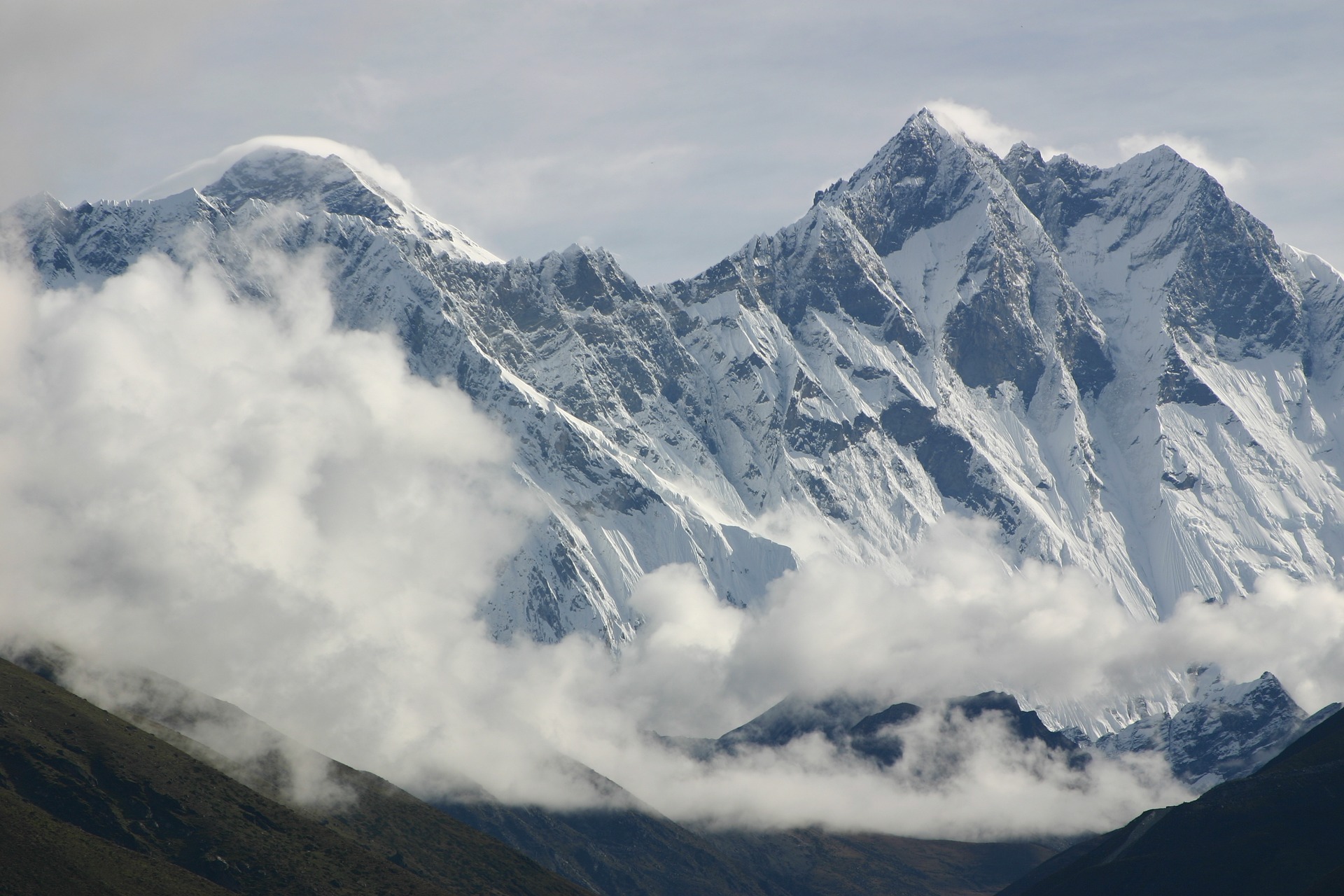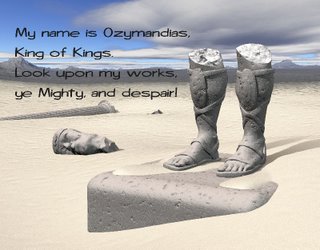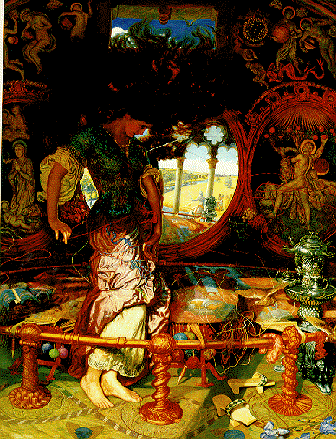Alfred Tennyson, 1st Baron Tennyson, FRS (6 August 1809 – 6 October 1892) was Poet Laureate of Great Britain and Ireland during much of Queen Victoria’s reign and remained one of the most popular British poets. Tennyson excelled at penning short lyrics, such as “Break, Break, Break,” “The Charge of the Light Brigade,” “Tears, Idle Tears,” and “Crossing the Bar.” Much of his verse was based on classical mythological themes, such as Ulysses, although In Memoriam A.H.H. was written to commemorate his friend Arthur Hallam, a fellow poet and student at Trinity College, Cambridge, after he died of a stroke aged just 22.
The brook is a poem written by Alfred, Lord Tennyson. In this poem, the brook plays the role of the narrator as it tells the reader about its journey. Here is The Brook: Summary.
The Brook: Summary
The brook starts out from the dwelling place of birds such as the coot (a water bird) and the hern (archaic word for heron). It makes a sudden rush as it flows out. The presence of sunlight causes the brook’s water to sparkle as it flows among the fern. It then continues its journey by flowing down a valley. While doing so, the sound of the flowing brook resembles that of people quarreling. Hence the phrase, ‘bicker down a valley.
The brook flows down along hills. Sometimes, it also glides between long and narrow hill ranges, called ridges. Thorpes refer to small villages or hamlets. Between two small towns, the brook passes several thorpes and a large number of bridges. The numbers used in this line, such as ‘thirty,’ ‘twenty,’ ‘half a hundred’ should not be taken in the literal sense. These numbers are used to give the impression of ‘several’ or ‘many’ and to maintain the rhythm of the poem.
Finally, the brook passes Philip’s farm and flows into the overflowing river. The brook further states that men are transient. They come and go over time. But it outlives men and continues forever.
The lines ‘For men may come, and men may go, /But I go on forever.’ are repeated several times in the entire poem.
As the brook flows over stony paths, its water makes a chattering sound. This sound is high pitched, hence the phrase ‘sharps and trebles’ (both high pitched notes in music).
As water flows past an obstacle, a reverse motion is created that leads to swirling. These are known as eddies. A lot of bubbles are also formed.
As the brook flows over pebbles, the sound it makes is similar to that made while talking rapidly. Hence the phrase, ‘babble on the pebbles.
The brook does not flow in a straight line. It makes a lot of turns and etches out a path full of curves. ‘Fret’ means ‘fuss’ or ‘worry.’ The brook forms so many curves that it seems as if it is constantly troubling its banks to change shape. The brook continues beside many fields as well as fallow lands. ‘Fairy forelands’ refer to promontories. These are masses of land that overlook the brook. These promontories are home to plants such as willow weed and mallow. The brook passes them on its journey.
As the brook flows on its way to the overflowing river, it makes a continuous sound. The sound is like that of people talking. Hence, the line ‘I chatter, chatter, as I flow”.
The brook repeats that although men are transient, it goes on forever.
Go to Page 2 to continue reading!
Some online learning platforms provide certifications, while others are designed to simply grow your skills in your personal and professional life. Including Masterclass and Coursera, here are our recommendations for the best online learning platforms you can sign up for today.
The 7 Best Online Learning Platforms of 2022
- Best Overall: Coursera
- Best for Niche Topics: Udemy
- Best for Creative Fields: Skillshare
- Best for Celebrity Lessons: MasterClass
- Best for STEM: EdX
- Best for Career Building: Udacity
- Best for Data Learning: Pluralsight

















this is pretty good but a few lines like the netted sunbeams is wrong
I understand it clearly now thanks
Your from which School
I understood it very clearly now
no i think that’s only an imagination or quite true reality!!!!!
Easier language will be preferable.( as this would be needed mostly by young students )
i definitely agree to dis remark
You said correct
I am with shaima
thank you abhishek..its quite helpful
Lines are not to the point.Extra information is given and not what is required 🙂
some more easy language is good
it s nice
Its useful but its not to the point but giving meaning for new words are really good
The summary is well written and understandable. And this has proved helpful for the purpose.
I don’t it necessary for the summary to be too long. But all the same it is pretty good because it proved useful for me.
Its very useful for my summary and summer projects
it is good and in easy language which I understood very well. Thanks
Its too much long..I needed a short but perfect summary.. Meanings of some line a were far beyond my imagination.. Overall..it was helpful…
Thank you
This is quite useful.
This is quite useful.I am benifited.
i found it very useful
It is very good and helpful but long Thankyou
This is very godd as it is all know. There is also good explanation by beaming notes. By read this explanation you can enjoy examination without any fear.
Give a some short summary.
This too much big
Excellent summary but a little lengthy. It is very useful for summary projects also. Great work.
thanks .this summary helps me to complete my project
It helped me its really nice
excellent summary it help me a lot but very lengthy!!!!
This summary was very helpful for my courses.And s lot of thanks for that
this poem is amazing and true.this language is proportional to 9th std
this poem is amazing and true.this language is proportional for class9th
Helped me passing
It is very simple and nice poem for school children
very helpfull.if anybody wats to ask question from me related to this chapter so my contact no. is7876942406
Thnx..aa looottt…
Helpfulllllllll!!!!!!!
Its simple and easy to understand.i like it
Good jobe easy lagauged thanks
A perfect analysis of the poem. However, I always felt the sunbeam was netted because it filtered in through the branches of trees growing by the brook.
thank you so . It really helped
It’s a very good comment thank you for your efforts .I really appreciate your work.
It Helps me to cheat well hàhà Thankies
Comment: I have been teaching this poem for three years.
IT WAS REALLY USEFUL TO ME
It’s a big summary but it’s good to have more details.
Hence Tennyson uses the word ‘loiter’ is used. “is used” should be omitted
Bahut bekar poemvka summary hai
Its a beautiful poem by Tennyson as it shows the lives of human beings how it is lived
it is good but it must be in easy language because it is mainly important for youngesters and also because all students not know english very well.although it is nice and easy to read.
this is not right at all
good but it really fucked up my project and my teacher
There no second page here it is not the complete summary otherwise it is excellentbbut it should be complete
Ishita, Please check the link to second page after the ad ends. Thank you!
Hai this was a nice cute summery
ya it is quiet understandable but too long.
very nice
NICE ONE…..THANKS FOR UPLOADING.
It’s helpful for me and others also
its easy to understand “but to loooooong”
WHEN ITS LONG THE MORE U COULD UNDERSTAND’
nice but it can be short and crisp then it will be easy
thank you for this one.. quite helpful
Awesome . Understood the poem better . Thanx to the people who uploaded this. ????
Iam understanding this Summary but too large……… Thanxx….
It’s too good and quit easy to understand ??
AWESOME SUMMARY I GOT REALLY HELPED OF THIS
I CANT STOP SAYING!!!!!!
5 STARS FOR THIS SUMMARY
good it is very useful but too big, anyways I like it it is nice
I clearly understood the poem. Really it is a marvelous website
but i cant understand the values
what do you mean by ‘value’. why cant’ you understand the value of the nature? I am confused
I read it in my book, it was the same,but it was truly heart touching
It’s marvelous and one can forget any sorrow to feel happy. I enjoyed reading this poem several times. I wandered the nature is so strong to feel free in our day to day life,
Thank u fr this one………. quite hlpfull..?
Could be better
The life of a brook can be collated to human life. We start as tiny toddlers we grow , face many hurdles live within society and submerge with the river and ocean of eternity. He is immortal but the water of brook in river can’t flow back and it represents human life and men may come and men may go but eternity time d nature for ever
its quite long i need a short summary ………….but useful
it will help me in exams but english is quite difficult as we are not native speakers of english
It could be better…its a summary so it should be short and it should use a easy language for better understanding…
It could be better when it is short. But this is very useful for my exam point of view and summer project
It is very helpful but the entire poem’s summary or translation is not given like about the netted Sunbeam
Its helped m very much.